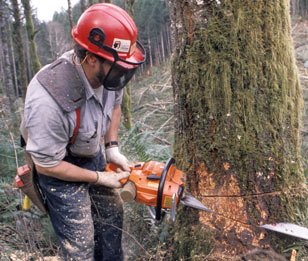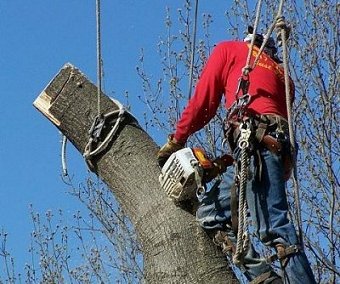How to Remove a Fallen Tree
The job of removing trees can be exhausting and dangerous, so make sure you exercise an abundance of caution when undertaking this task yourself.
Trees can become uprooted, blown over, or fall for a number of reasons such as storms, hurricanes, tornadoes, and earthquakes. Sometimes, it can fall apart naturally if a tree becomes too old. Before you decide to get rid of it yourself, it’s best to determine the reason it fell and whose responsibility it is to clear away the fallen tree. Unfortunately, trees – whether it’s the planting, preservation or removal of these – have caused many a neighborhood discord and even lawsuits.
Once you’ve determined that the tree is on your property, then the responsibility for its removal falls on your shoulders. You can either remove the tree yourself or call a professional arborist to do it for you. It’s best to do this as soon as possible; not only is it an eyesore, it’s a hazard that can cause further falling, damaging more of your property and putting your family’s life in danger.
If you decide to remove the tree yourself, here are some tips for tree removal:
1. Determine if you need a permit to remove the fallen tree.
Most states have regulations in place with regards to the removal of trees from any property, whether they are fallen or not. While the tree may have been in your property, its removal can have an impact on the environment around you so you must contact your local government and find out if you need a permit to remove the tree.
2. Ask for help.
Depending on the size of the tree that fell, it might be a good idea to call a friend who can help you with the task. Tree removal is more arduous than you think and having an extra pair of hands can go a long way towards making the job easier. It’s also helpful to have another person with you who can call for help in case you get injured, or worse, trapped by the fallen tree.
3. Use appropriate safety gear.
Aside from being laborious, tree cutting or removal is a dangerous undertaking. Professionals are required to wear protective head-to-toe gear, so it’s best to take a page out of their book and do the same. If it can be helped, refrain from using a chainsaw especially if you have no experience using it.
4. Make sure the area surrounding the tree is safe.
Before you even start working on the tree, make sure that there are no power lines anywhere near the vicinity of the tree. If there are, aborting the mission and calling in the pros are strongly recommended. Do not go through with the tree removal yourself even if you are sure that the power lines have been shut off. If there are no power lines anywhere near the tree, check if it is resting precariously on any obstruction before proceeding with the job.
5. Start with the branches.
Cut smaller branches before moving onto the bigger branches. If, however, there are large branches propping the tree up, leave them on the trunk so that the tree won’t start rolling or moving. Work your way around the tree until it is left bare, except for any large branches that are supporting it.
6. Chop the tree down into smaller pieces.
One you’ve stripped the tree of all branches, divide the tree into manageable sections. If you must use a chainsaw for this task, make sure you have done your homework and learned how to use it properly and safely. Turn it off immediately if it ever gets stuck and remove the blade from the tree before turning it on again. It’s best to use a wedge to remove the chainsaw from the tree as it can be dangerous to try and pull it with brute force.
Remember that removing fallen trees, especially large ones, is a job for experienced professionals. Risking your safety and well-being to save money is not worth it.

